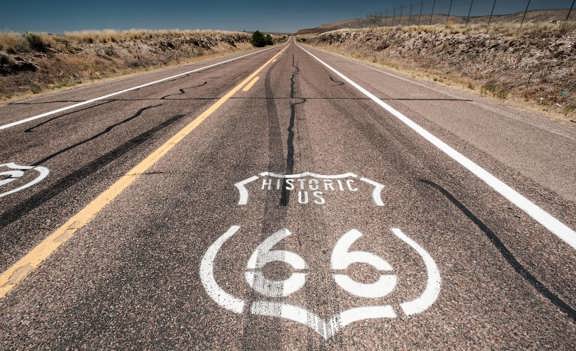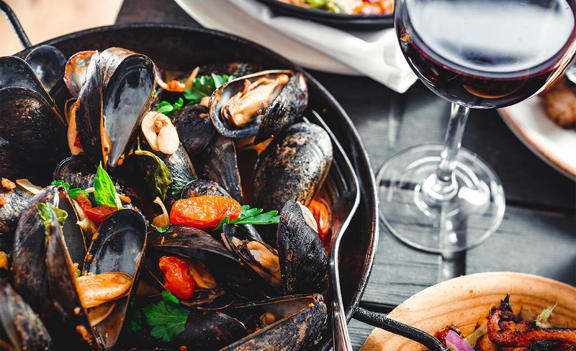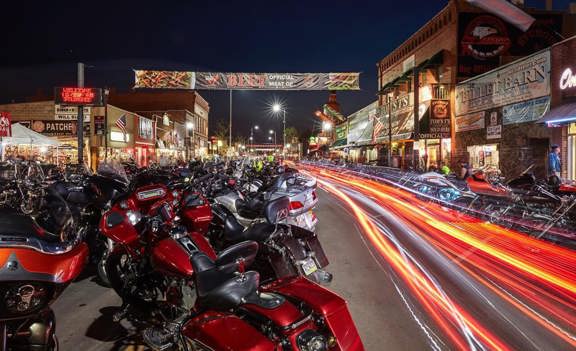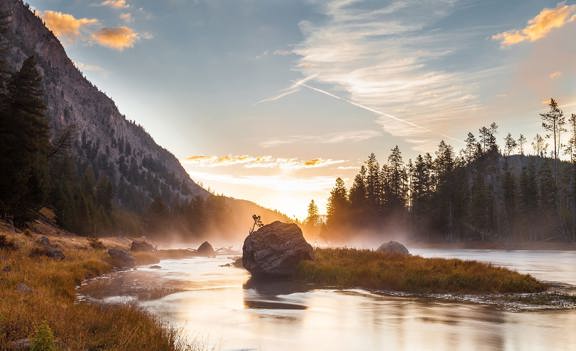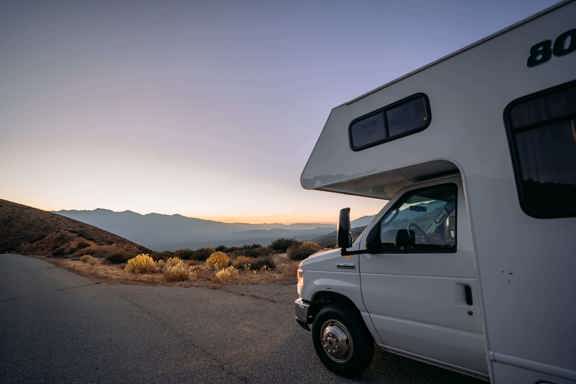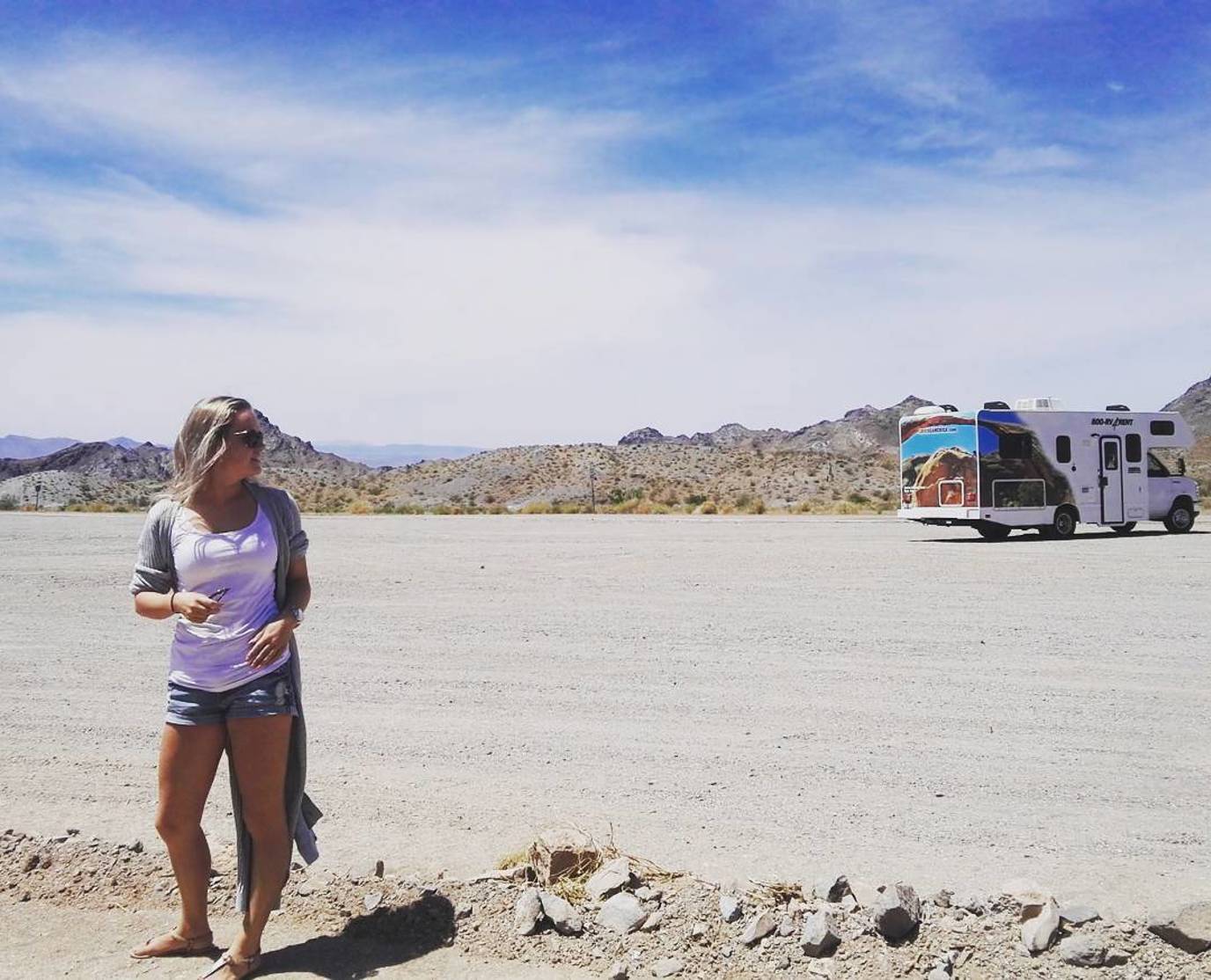
For road trippers chasing nostalgia and scenic beauty, there’s nothing quite like the open road of Route 66. While most travelers experience the “Mother Road” from east to west—starting in Chicago and ending at the Pacific Ocean—there’s something refreshingly different about doing it in reverse. Starting in sunny California and working your way through the heart of America to Illinois provides a new perspective on this iconic route, enhancing the entire trip.
In this blog, we’ll guide you through a reverse Route 66 journey, highlighting major stops, unique attractions, travel tips, and the historical significance of this legendary highway. We will also cover the main route and its key attractions to ensure you don't miss any essential experiences along the way.
Introduction to Route 66
Route 66, also known as the “Main Street of America,” is one of the most iconic roads in the United States, stretching over 2,400 miles from Chicago, Illinois, to Santa Monica, California. This epic journey takes you through eight states, showcasing the country’s diverse landscapes, cultures, and histories. From the rolling hills of the Midwest to the sun-kissed deserts of the Southwest, Route 66 is a road trip like no other. With its rich history, quirky roadside attractions, and breathtaking natural beauty, Route 66 is a must-visit destination for any traveler.
Why Drive Route 66 in Reverse?
Starting in California and heading eastward isn’t just a change in direction—it’s a change in experience. Here’s why:
-
Milder Weather: Depending on the season, beginning in the temperate climate of California allows you to ease into the harsher climates of the Midwest.
-
Gradual Culture Shift: Driving west to east provides a fascinating reverse narrative—from the modern sprawl of Los Angeles to the classic Americana of the Midwest.
-
Easier Returns: Many travelers flying back to major hubs find more convenient (and often cheaper) flight options out of Chicago.
-
Fresh Perspective: You’ll be part of a smaller group of travelers going this way, which means fewer crowds and more unique stories to tell.
-
More Than One Night: Spending more than one night in key locations along Route 66 allows for deeper exploration of the area's attractions, activities, and cultural offerings, advocating for a more leisurely pace to fully enjoy the travel experience.
Starting Point: Santa Monica, California
Your Route 66 journey in reverse begins in Southern California, where many people celebrate its end: Santa Monica Pier. Take in views of the Pacific Ocean and snap a photo at the “End of the Trail” sign. Then dive into the bustling streets of Los Angeles for some urban adventures. A few other places to visit include:
-
Hollywood Boulevard: Check out the Walk of Fame and TCL Chinese Theatre.
-
Griffith Observatory: Incredible views of the city and the Hollywood Sign.
-
Route 66 Mural in Pasadena: An early highlight for retro-road buffs.
RV Tip: Spend your first night at Dockweiler RV Park or Malibu Beach RV Park for unbeatable ocean views.
Stop 1: San Bernardino & Barstow, California
As you make your way out of L.A., the nostalgia begins to ramp up. In San Bernardino, visit the first McDonald's site-turned-museum and the Wigwam Motel, one of Route 66’s most iconic lodging landmarks. In Barstow, you’ll find:
-
Route 66 Mother Road Museum
-
Elmer’s Bottle Tree Ranch: A quirky and colorful forest of glass art installations
-
Barstow Station: Grab a snack and check out the retro architecture
Stop 2: Mojave Desert to Kingman, Arizona
Crossing into the Mojave Desert, you’ll travel one of the longest unbroken stretches of Route 66. Stop at Amboy Crater, a dormant volcano surrounded by desert vistas. Then head into Arizona via Oatman, a ghost town-turned-tourist destination where wild burros roam the streets.
The old route of Route 66, decommissioned in 1985, still offers enthusiasts a chance to explore its historical and touristic value, passing through charming, tiny towns and iconic landmarks that reflect its nostalgic appeal.
Arriving in Kingman, you’re in the heart of Arizona Route 66 country. Highlights include:
-
Historic Powerhouse Visitor Center
-
Kingman Railroad Museum
-
Mr. D’z Route 66 Diner: A classic roadside diner with neon lights and American eats
Stop 3: Seligman & Flagstaff, Arizona
As you continue east, stop in Seligman, the town credited with revitalizing interest in Route 66 thanks to local barber and activist Angel Delgadillo. This kitschy town inspired Radiator Springs from Pixar’s movie, Cars. Don’t miss:
-
Delgadillo’s Snow Cap Drive-In
-
Route 66 Gift Shops & Murals
Next, head into Flagstaff, a scenic mountain town with a lively downtown and convenient RV parks. Notable attractions:
-
Lowell Observatory
-
Historic Route 66 Motels
-
Walnut Canyon National Monument
Stop 4: Grand Detour to the Grand Canyon
Though not technically on Route 66, Grand Canyon National Park is a must-see detour and easily accessible from Flagstaff. Park your RV at Trailer Village RV Park on the South Rim and take in one of the world’s most stunning natural wonders.
Travel Tip: Make reservations early if you plan to stay overnight near the park—spots fill up fast!
Stop 5: Winslow & Holbrook, Arizona
Back on Route 66, stop by Winslow, made famous by The Eagles’ song Take It Easy. Snap a picture at the “Standin’ on the Corner” Park, then cruise into Holbrook, home to:
-
Petrified Forest National Park
-
Wigwam Motel
-
Joe & Aggie’s Café: A classic Route 66 diner with hearty meals
Stop 6: Albuquerque & Santa Fe, New Mexico
Crossing into New Mexico, Route 66 becomes a blend of Native American culture and desert landscapes. In Albuquerque, visit:
-
Old Town Albuquerque
-
Route 66 Diner
-
Sandia Peak Tramway
For a detour steeped in culture and history, head to Santa Fe. Though not part of the newer Route 66 alignment, Santa Fe was on the original path. Explore:
-
Adobe-style architecture
-
Local art markets
-
Georgia O’Keeffe Museum
Additionally, the Mother Road Market in Tulsa, Oklahoma, is a notable food hall offering a diverse range of local vendor cuisines, contributing to its appeal as a dining destination on Route 66.
Stop 7: Tucumcari, New Mexico
This town is a neon lover’s dream. Famous for its vintage signs and murals, Tucumcari offers that old-school Route 66 charm. Don’t miss:
-
Blue Swallow Motel
-
Tee Pee Curios
-
Tucumcari Historical Museum
RV Tip: Camp at Blaze-in-Saddle RV Park for a scenic and restful stay.
Stop 8: Amarillo, Texas
Welcome to the Lone Star State! Amarillo offers a blend of Texas charm and Route 66 flair. Attractions include:
-
Cadillac Ranch: A public art installation where you can spray paint buried Cadillacs
-
The Big Texan Steak Ranch: Home of the famous 72-oz steak challenge
-
Route 66 Historic District: Boutiques, restaurants, and antique shops
Stop 9: Oklahoma City, Oklahoma
The route continues through the heart of America in Oklahoma City, where western culture meets Route 66 heritage. Visit:
-
Oklahoma Route 66 Museum (Clinton)
-
National Cowboy & Western Heritage Museum
-
Bricktown Entertainment District
For a unique RV stay, check out Rockwell RV Park, which offers full amenities and a convenient location.
Stop 10: Tulsa, Oklahoma
Next, swing into Tulsa, another major Route 66 city rich with history and architecture. Attractions include:
-
Golden Driller Statue
-
Philbrook Museum of Art
-
Meadow Gold Neon Sign
Tulsa is also known for its art deco buildings and Route 66-themed murals. Great RV camping can be found at Tulsa Warrior RV Park.
Many of these sites are listed on the national register, highlighting their historical significance along Route 66.
Stop 11: Springfield, Missouri
You’re entering the Ozarks and nearing the home stretch. In Springfield, considered the “Birthplace of Route 66,” explore:
-
Route 66 Car Museum
-
Fantastic Caverns
-
College Street Historic Route 66 District
Grab a bite at Red’s Giant Hamburg, credited as the first drive-thru restaurant in the country.
Stop 12: St. Louis, Missouri
Next up: St. Louis, gateway to the east. Take in big-city attractions before your final leg of the trip.
-
Gateway Arch
-
Route 66 State Park
-
Ted Drewes Frozen Custard: A Route 66 tradition since 1929
-
Old Chain of Rocks Bridge: A unique stop along Route 66, showcasing its cultural and historical significance
RV travelers can find full-service spots at St. Louis RV Park or Cahokia RV Parque just across the river.
Final Stop: Chicago, Illinois
Congratulations—you’ve arrived in Chicago, the traditional beginning (and your ending) of the historic Route 66. Many travelers start their adventure in either Chicago or Los Angeles. Before concluding your journey, explore:
-
Route 66 Start Sign at Adams Street
-
Lou Mitchell’s Restaurant: A must-visit for a celebratory breakfast
-
Navy Pier, Millennium Park, and the Art Institute
While Route 66 technically ends here, the memories you’ve collected stretch far beyond the city limits.
Route 66 History
Route 66 was established in 1926 as a major route for those migrating to the West during the Dust Bowl era and World War II. It was the shortest, year-round route between the Midwest and the Pacific Coast, making it a vital path for travelers and truckers alike. The road was paved in 1938, making it the first highway to be completely paved.
Over the years, Route 66 has undergone many changes, with alignments of the road changing often as improved sections of highway were constructed. Despite being officially decommissioned in 1985, Route 66 remains a beloved and iconic American highway, symbolizing the country’s westward expansion and the American Dream.
Local Culture and Attractions
Route 66 is home to a diverse range of local cultures and attractions, from the vibrant cities of Chicago and Los Angeles to the quaint small towns of the Midwest and Southwest. Some of the top attractions along the route include the Grand Canyon National Park, Petrified Forest National Park, and Joshua Tree National Park.
Visitors can also explore the many historic sites, museums, and gift shops that line the road, such as the Ambler’s Texaco Gas Station, the Devil’s Rope Museum, and the Elmer’s Bottle Tree Ranch. For a truly unique experience, be sure to check out some of the quirky roadside attractions, like the Blue Whale, the Jack Rabbit Trading Post, and the VW Slug Bug Ranch.
Local Food and Drink
The food and drink scene along Route 66 is a reflection of the region’s diverse cultures and histories. From classic American diners to authentic Mexican cuisine, there’s something for every taste and budget. Some of the top recommendations include the Rock Cafe in Stroud, Oklahoma, the Midpoint Cafe in Adrian, Texas, and the El Rancho Hotel in Gallup, New Mexico.
Be sure to try some of the local specialties, like the “Ugly Crust” pie at the Midpoint Cafe or the “Blue Swallow” burger at the Blue Swallow Motel. And don’t forget to wash it down with a cold drink from one of the many vintage gas stations and roadside attractions along the way.
Scenic Views and Photography
Route 66 is a photographer’s paradise, with its stunning natural landscapes, vintage roadside attractions, and quirky small towns. Be sure to stop at some of the many viewpoints and overlooks along the way, such as the Continental Divide and the Oklahoma-Texas border.
And don’t miss some of the iconic landmarks, like the Cadillac Ranch, the Giant Rocking Chair, and the Conoco Tower Station. With its rich history, stunning natural beauty, and quirky roadside attractions, Route 66 is a road trip that’s sure to leave you with unforgettable memories and stunning photographs.
Tips for Planning Your Reverse Route 66 Journey
1. Plan for Different Climates. California offers beach weather, while Illinois can have unpredictable Midwestern storms. Pack layers and check forecasts regularly.
2. Book RV Campsites in Advance. Some iconic RV parks fill up fast—especially in peak seasons. Reserve early, especially for places like the Grand Canyon and Santa Fe.
3. Prep Your Playlist. Nothing complements Route 66 better than a good road trip playlist. Include classics like Route 66 by Nat King Cole and Take It Easy by The Eagles.
4. Don’t Rush It. Route 66 isn’t meant to be rushed. Give yourself 2–3 weeks to enjoy the sights, detours, and spontaneous discoveries.
5. Bring a Physical Map. Cell service can be spotty in remote areas, so having a paper map or Route 66 guidebook is a wise backup.
6. Use Google Maps Wisely. While Google Maps is great for navigation, it can default to interstate highways. Customize your settings to avoid motorways and tolls. Supplement Google Maps with detailed guides and local maps to enhance your journey and discover attractions along Route 66.
A Journey Through Time
Driving Route 66 from California to Illinois allows you to experience the evolution of America in reverse. You’ll start with the sun-drenched coastlines and modernity of L.A. and end in the historic, industrious heartland of Chicago.
Along the way, you’ll witness the changing landscapes, cultures, and stories that shaped the country. The passage of the Federal Highway Act of 1956 marked the decline of Route 66 in favor of the faster, safer interstate system through major cities, which has since supplanted much of the original highway.
Traveling in reverse isn’t about going against the grain—it’s about seeing Route 66 through a new lens. Instead of a rental car, why not take the trip in an RV? With a Cruise America RV rental, you’ll have all the comfort and freedom to fully enjoy every quirky roadside stop, natural wonder, and slice of Americana along the way. Reserve an RV today!
